
You are reading the older HTML site
Positive Feedback ISSUE
july/august 2008
emerald physics
CS2 loudspeakers, part 2
as reviewed by John Potis

|
Part II
If you didn't read Part I of my report on the Emerald Physics CS2 loudspeakers you'll want to do that before going on because there's way too much out of the ordinary going on with these speakers to ignore. You can read the introduction to this review here. If you already read the intro you'll recall that it was time to get on with the observational portion of the review, so I'll get right to that after a couple of incidentals.
First, I should mention that the Behringer Ultra Drive Pro DCX2496, which is the brains of the CS2 system as it provides the digital crossover functions as well as digital EQ, is a professional piece of gear intended for the professional market. And most professionals don't do single ended RCA connections; they're balanced XLR all the way. So you'll want to consider that you're going to need three pairs of balanced XLR connections: the first pair to connect to your preamplifier to the Behringer, the second and third pairs to go between the Behringer and four channels of amplification. Of course, if your gear doesn't do balanced, you're not out of luck. You'll just contact Underwood HiFi and they'll sell you suitable interconnects with RCAs on one end and XLRs on the other. These are made by Emerald Physics and they'll run you $100 per pair. For this review they included three such pairs of cables with XLRs on both ends and I was impressed by their construction. How do they sound? Well …as compared to what? Inasmuch as they were the only cables I was able to use, I really have no basis of comparison, but I sure didn't hear anything in this system that would make me question the validity of these cables. And at their price, I'd consider them a no-brainer - think of them as part of the system upon purchase.
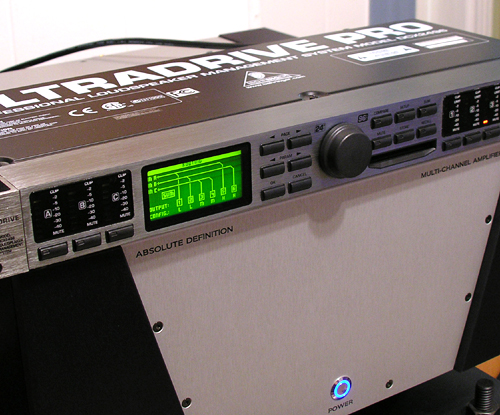
One other practical matter that deserves mention is the fact that when I introduced the CS2 system to my system I found myself having to advance the volume control on my preamp significantly past what is my usual. My Bel Canto Pre2p indicates volume by displaying numerically between 0 and 120. Spirited listening sessions typically require settings indicated by a display of 85 or 90. With the Emerald Physics system in place settings well in excess of 105 became the norm. I contacted Emerald Physics on the subject and was relieved to hear that the system gain can be advanced. There's no reason to go into it here, just contact Emerald Physics for details if required.
Now, back to our regularly scheduled review.
I'd said in Part 1 that the CS2s are giant-killers, or at least that is how they were originally represented to me. So are they really? In several respects I'd have to agree that they are. If I was shopping within this price class I can't think of any speakers that I could audition along side of the CS2s that would outshine them when it comes to immediacy, clarity, articulation and full frequency response. There's no question about it, the CS2 has all of these bases covered.
Are they perfect then? Well, perfection when it comes to the reproduction of music is and shall always remain subjective. And inasmuch as these speakers do so much right I'll begin by discussing where they do indeed fall short—even if only ever so slightly of the giants they purportedly kill. But before I do, I need to make something clear. These speakers deliver so much performance for their class that any discussion of their shortcomings becomes a purely academic matter of nit picking. In fact, I can't imagine that anybody who gets a good demonstration of what the CS2 can do will walk away anything other than strongly impressed. In their class and for their asking price, they simply don't leave much to be desired. The Emerald Physics CS2 loudspeakers are a true gift-horse that I don't see many rational music lovers looking in the mouth. It's that simple. But we're talking about giant-killers here; remember?
As compared to the very best speakers I've heard—speakers that also stand out within their own class, the CS2 can lose a touch of resolving power when really pushed hard. Already I'm forced to introduce a qualification to my caveat because these speakers like to be pushed hard and I'll get to that momentarily. But when they are thusly pushed on very complex musical passages, the CS2s can lose just a little of their poise. Starting about 9 minutes into Tchaikovsky's 1812 Overture (Telarc SACD) the speakers failed to sort out and articulate the cacophony of instruments and coral voices as well as the best and more expensive speakers I've heard. I'll also add that I was a tiny bit let down by the way they resolved the triangles earlier in the same track—I thought that the CS2s just didn't give them the crystal clarity or the rock-solid presence in my room that I've heard from other systems. That is until I tried the same piece on my reference Tidal Pianos again. It turns out that the Emerald Physics speakers produce all that the Tidals did and in all my listening, I couldn't find another instance of the CS2s losing their composure.
That's it. That's the extent of my list of picked nits. As always, matters of taste are subjective and I suppose that listeners may prefer slightly different shades of gray when it comes to speaker preferences, but in every other objective aspect of the CS2's performance, they are at least competitive with speakers way outside their class.
Midrange articulation is superb. The CS2s are transparent, coherent, detailed and uncolored, even right out of the box. In these areas these speakers are just really good. Now, a lot of speakers in this class are good and can be described in just the same way. In fact, it's amazing just how good the midrange performance has gotten, generally speaking, in today's better speakers. But where the CS2s leave the pack behind is in the area of dynamics. In short, the Emerald Physics CS2s capture more of the dynamics of live music than any reasonably priced speaker that I can think of, certainly any that I can fit into my modestly sized room.
Imaging and soundstaging properties are first-rate, too. The CS2s regularly produce an image that breaks completely free of the speakers as they place instruments well outside of the speaker locations with lots of height and depth and image focus is excellent.
One of the first things a writer learns about reviewing audio products is to be careful when choosing the words used to lavish praise onto a product. Choose the wrong words and inadvertently communicate something never intended and inadvertently damn a product. For instance, comparing a speaker to a really good PA monitor probably isn't the most flattering thing you can say about a domestic loudspeaker—even if it's a comparison worth making, which it is in this case.
In several respects the CS2s remind me of a really good PA monitor—usually a horn loaded one at that. PA monitors can play loudly and they can do so with remarkable ease. They don't break a sweat. There's also an immediacy there because, well, because they are—PA monitors are right there. You're hearing them live, not producing a reproduction of an event gone by. And the very best ones are dynamically articulate as hell—it's their raison d'être. They start and they stop on a dime and the loudest crescendos are all in a day's work. In short, they have tremendous dynamic range. So do the CS2s. Macro dynamics within the domestic environment are excellent. These speakers can play loudly. If called upon to do so, they'll belt it out and pin you back in your seat and they'll do it with no sense of strain at all. That's cool. But what's really fantastic about the CS2s is their way with micro dynamics. They're the best I've ever used in this regard. These speakers are alive. True, most PA speakers are oblivious to most of the finer points you'll be looking for in a high end domestic speaker, but they usually do let the music open up and breath, just as do CS2s.
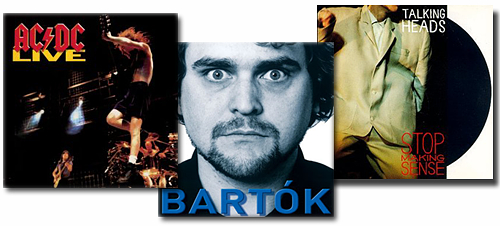
Of course, the PA comparison applies to heavy-duty amplified instruments such as those found in Rock & Roll rather than the acoustic instruments found in classical music. Listen to your favorite live recording such as Talking Heads Stop Making Sense or AC/DC Live and the CS2s will beckon you to crank it up. Crank it way up! Their sense of ease and their lack of distortion and strain may cause you to alter your listening habits. You won't crank it because you need to, you'll crank it because you can. Your ears will give out before the speakers do but their sense of ease means that both the speakers and ears hang in there for longer than you may have thought possible. I can't think of another speaker in or around this class that'll play so loudly with such effortlessness.
Of course, classical music doesn't present the same opportunity for ear-splitting volumes. But even here the CS2s are, from time to time, able to exhibit their seemingly bulletproof personality. Take the aforementioned 1812 Overture. It's great fun. But the cannon fire needs to be experienced to be appreciated. Listen to them over the CS2s and you'll suddenly hear how distorted is their reproduction through every other speaker anywhere near this class. The CS2s produce a clean distortion-less rendition that'll certainly have you recoiling in your chair. And even the cannons are fast—no amorphous boom here, listen to them crack! Listen to that transient attack and then feel the power right on its heels as it sets you back on yours. And, once again, observe the sense of ease. These speakers just make it look easy.
Speaking of bass power, these speakers are 3dB down at 20Hz. 'Nuff said? Actually, no. There's a lot more to the story. The CS2s have a spectacularly natural sounding and unexaggerated bass. It's extended and it has fantastic potential for sonic mayhem, but most of the time you won't have a clue. Most of the time, you may as well be listening to a pair of excellent $3500 monitors. There's no embellishment at all. There's no artificial warmth and male vocals are never pumped up or boomy. There's absolutely nothing there to tip one off to the capabilities of the CS2s. Most of the time all you observe is their complete neutrality and linearity. There's no artificial anything about the CS2s and there's certainly no upper bass humps found in some smaller speakers as they try to sound bigger and fuller than they are. But when the CS2s are called upon to unleash hell, they'll do so better than the great majority of speakers will. And they'll do it cleanly. They'll do it effortlessly.
In just about every objective criterion the CS2s do a masterful job. It's in the subjective stuff—the stuff that's evaluated according to one's tastes and predilections—where the listener will have to decide if the CS2s are what the doctor ordered.
I've already said that there's no artificial warmth about the CS2s and there's little in the way of romanticism. If euphony is your idea of musical satisfaction the CS2s may not be for you. As I said in Part I, the CS2s are digitally equalized to be flat within +/- .5 dB anechoically. I've already gone into how their in-room power response isn't nearly as bright as one would expect of such a flat speaker due to the speaker's controlled directivity. But these speakers are certainly forward. As I said before, they are alive. If you're looking for polite and retiring, these won't be for you. But at the same time I want to be unequivocal about something here: these speakers may be forward and they may be alive, but they are remarkably non-fatiguing to listen to. Only the worst recordings will team with the CS2s to produce any edge or glare. They won't produce any sharp frequency peaks to pierce the ears, either. But they're not sweet. They're not “musical” in the way that many frequency-contoured and artistically voiced loudspeakers are. The CS2s are all about truth. Whose truth you may ask? The CS2s are true to the recording; it's that simple. It's here that the CS2's rubber meets the road and it's where you'll know if the CS2s are for you or not.
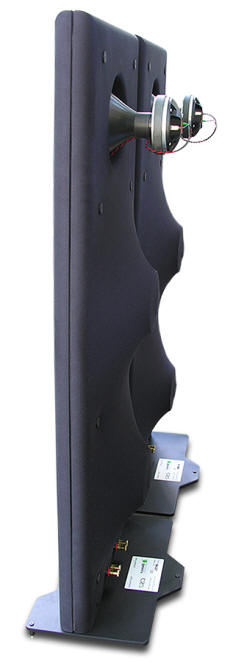 This may be a good place to address one
question I've already seen posed with regard to the controlled
directivity of the CS2: what do they sound like off-axis? Must the
listener be seated in the center with the head in a vise to hear the
speaker's virtues? Well, to hear them at their very best, yes. You won't
need your head in a vise; they're not nearly that directional. But you
will want to be seated reasonably within the area of the sweet spot.
This is true with any speaker, of course. So the question is; how
quickly does the sound deteriorate as the listener moves off axis? The
answer to that one is: not all that quickly. First, they're only dipolar
through the bass drivers and the compression mid-tweeter is forward
firing only. So there's no null to the sides of the speakers. Second,
though the output is controlled, it's not what you may think. There's
plenty of off-axis music, it's just that the treble starts to roll-off
and the sound sweetens some. But there's plenty there to enjoy should
you want to move about the room while listening. It's really not an
issue.
This may be a good place to address one
question I've already seen posed with regard to the controlled
directivity of the CS2: what do they sound like off-axis? Must the
listener be seated in the center with the head in a vise to hear the
speaker's virtues? Well, to hear them at their very best, yes. You won't
need your head in a vise; they're not nearly that directional. But you
will want to be seated reasonably within the area of the sweet spot.
This is true with any speaker, of course. So the question is; how
quickly does the sound deteriorate as the listener moves off axis? The
answer to that one is: not all that quickly. First, they're only dipolar
through the bass drivers and the compression mid-tweeter is forward
firing only. So there's no null to the sides of the speakers. Second,
though the output is controlled, it's not what you may think. There's
plenty of off-axis music, it's just that the treble starts to roll-off
and the sound sweetens some. But there's plenty there to enjoy should
you want to move about the room while listening. It's really not an
issue.
In terms of overall resolution, the CS2s are what I'd call a medium-high resolution speaker. What I mean by that is that you can find speakers with higher resolution out there, but you can also have them; I don't want them. The CS2s get me plenty close enough to the music without getting me way too close; so close that I can't hear the forest for the trees. They'll pull what's important out of the music without distracting with all the minutia—the artifacts of today's multi-tracked recordings that you weren't supposed to be privy to. Bartok, a Norwegian SACD on the Norwegian 2L label (featuring Annar Folleso, Bjorn Nyman and Christian Ihle Hadland on violin, clarinet and piano respectively) is a beautiful minimalist recording of a performance that took place in real time at the Sofienberg Church in Oslo by Lindberg Lyd As and it put the CS2s in an excellent light. Up until the point in time when I tried this disc I knew that the CS2s could get loud and raunchy and they could be great fun, but I had yet to try them on anything simple. I'd yet to test their way with the subtleties of acoustic music. I'd yet to test their sophistication. First, they produced the violin with superb tonality and richness and with beautiful texture and detail. And they set it in an acoustic space with tons of depth, width, and height. The CS2s really diagramed the dimensions of the church for me. And the piano sounded magnificent; beautifully balanced, and highly resolved without being overdone or sounding as if the microphone was riveted to the soundboard. For such simple music to work for me a speaker must bring out all the subtle contrasts of texture and tone. It's got to illuminate all the subtleties and distinctions of the composition. It's in these finer points that I find musical life. It's what makes the music consuming and involving. The CS2s did a wonderful job of pulling all of this out of the recording for me and thusly communicating the musical intent.
Up until now I've tried to take the high road and restrict my comments to the finer points of the CS2's performance. But no discussion of the speaker would be nearly complete without a discussion of its ability to produce hedonistic levels of bass. If you're a bass fanatic—or if you think you'd like to be—and you're shopping in this price class, you just can't do better than the CS2s where it comes to the accurate and powerful reproduction of deep bass coupled with a speaker that performs commensurately throughout the rest of the frequency spectrum. Not only do the CS2s produce a prodigious amount of quality bass, they are easier to set up than any full-range speakers I can think of. All the hard work has already been done for you and various EQ curves have been programmed into the Behringer already. All you do is tell it how far you'd like to place the speakers from the front wall (the wall behind them)—a process that just couldn't be much easier—and it does all the calculating for you. During the break-in process I programmed into the Behringer that I'd placed the speakers much further out into the room just so that it would pump up the bass levels and expedite their break-in. It was interesting to listen to the various EQ settings available. I could achieve amazing levels of weight and impact in the deepest bass but I'd lose overall resolution as the continuity and linearity was destroyed. In other words, these are not tone controls. They don't raise and lower bass levels in a linear and intuitive fashion as a tone control would. Rather, they produce unique compensation curves that correspond directly to various distances from the wall. When properly set, I played sonic spectacular after sonic spectacular and the CS2s never failed to produce spine tingling bass and drama—sometimes startling levels of it. And it all came in the form of clean articulate bass with no excess of boom, no overhang, and no audible distortion.
Conclusion
It's always difficult to talk to Audiophiles. Way too frequently they look at products myopically and it's just impossible to know what is going to blow their skirts up. It's really difficult to predict whether or not they'll agree on the ultimate worth and relative virtues of a speaker like the Emerald Physics CS2. Are they better than a Wilson Watt Puppy or other speakers of that ilk? Two reasonable audiophiles (if there really is such thing) may disagree but unless you're so loaded with cash that it's falling out of your arse, you've just got to agree that the Emerald Physics speakers offer a ton of value and they deserve serious consideration.
If you're a music lover without a fixation on the equipment, I'm not sure how you found this review, but the CS2 is a speaker that you need to consider heavily. Yes, it requires four channels of amplification but you're going to need two channels regardless. And from what I have gathered listening to the Wyred 4 Sound amps, you can't go wrong with them. They sound great, they pack loads of power and they're priced relatively inexpensively. If you catch an audiophile in a lucid moment he'll tell you about how much sense it makes to design an active speaker—a speaker packed with its own amplification that usually includes a dedicated amplifier for each driver—and that's basically what you have here in the Emerald Physic CS2 loudspeaker. The CS2 is a fairly large two-way speaker with a digital crossover that requires mandatory bi-amping. Throw in the digital EQ and we could very well be looking at the future in loudspeaker design. The reason this makes so much sense is because the manufacturer has already taken into account all aspects of system compatibility and you won't have to worry about this component working well or being synergistic with that component. It's all pre-tested and matched for you. But you needn't worry about that. All you need to know is that the CS2 sounds great, it plays loudly, it's more dynamic than any speaker I know of around its class and it's got the full frequency extension to keep you happy for years and years. Sure, you may run into speakers at some point that you'd rather have, but the price of upgrading out of the CS2 and into something truly better (as opposed to just being different) will probably be enough to keep you faithful.
In the end it may be easier to address the type of listener for whom the CS2 may not be the Holly Grail. This listener will probably be looking for aesthetic beauty, likely in a small artfully finished box. He won't care much about full frequency extension and he's not impressed by powerfully extended bass, no matter how well executed—he knows that such considerations are for those lacking in real class and taste. He thinks he's above all that. He's also looking for something with a laid-back presentation because he's not impressed by the realistic dynamics found in live music. He may also be looking for a sweetening through the upper midrange and treble that certainly isn't here. I won't argue with him here because this is one of those areas where I don't find that there's an absolute reference in live music—two different seats in the audience will usually provide two very different realities here. But I will warn him that sometimes laid-back speakers can lack the spark and the excitement that the CS2s routinely convey. They're often not as engaging. In short, this guy's looking for a speaker that tailors music to meet his idea of sonic reality; he's not all that interested in hearing exactly what's recorded on his discs.
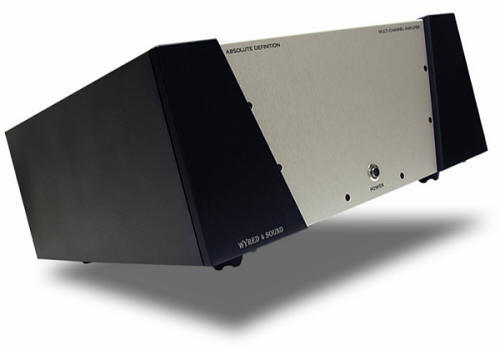
And what of this giant-killer thing? Well, the Emerald Physics/Wyred 4 Sound combination retails for $6495 with these four channels of included amplification. Should you already have two channels of amplification of your own, the CS2s can even be ordered with an ART Applied Research Technology SLA2 professional amplifier that pumps out 200 stereo watts into the CS2s bass drivers for a paltry $400. And should you have four suitable channels of power already, their relative levels can be adjusted via the Behringer and you can make them work marvelously, too. The point is that this is one extremely flexible system and your options are just about endless. It's extremely difficult to divide up a budget of $6500 (or less—way less) between a single pair of speakers and even a stereo amplifier and find another package that'll combine to outstrip this system under review in most of the criteria that I find important; full extension at the frequency extremes, transparency and immediacy, and dynamic articulation. In fact, I can't think of anything that comes close. So yes, if full-frequency extension, transparency, real-world dynamics and, most of all, truth are what you are looking for in a speaker system, then yeah, you owe it to yourself to hear these giant killers. John Potis
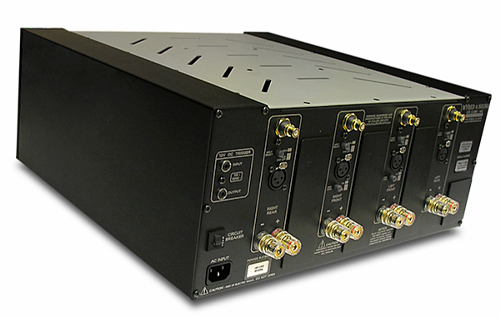
Postscript
Following submission of this review for fact checking purposes I got a call from Underwood HiFi's Walter Liederman who took no issue with any of my observations but felt that he had one additional point to make. He was referencing my contention that the CS2 system produced no excess warmth. He wasn't privy to the sidebar of associated components that readers are so he asked me what I was using in the way of source components and preamplifier. When I told him he responded to me that my system components are indeed chosen for such linearity and it was only the CS2 reflecting upon the components upstream. He told me that those using warmer sounding components would hear that same signature transmitted through the speakers. I have to concur. My sources and preamplifier come as close as I've found to a straight-wire with gain and I generally refer to them as clear glasses of water. Due to their transparent nature the CS2s absolutely strike me as the type of speakers that would perform completely at the whim of warmer and more euphonically voiced gear, should that be more to your taste.
Additionally he reminded me that the Behringer includes EQ functions and Emerald Physics owners looking to tweak the sound of their CS2s could contact Emerald Physics or Liederman for a tutorial on how to adjust the EQ of the system. They won't do it for you and at this point in time I don't know exactly how helpful they can be as it pertains to suggesting changes, but they'll assist you if you want to go down that road. John Potis
CS2 Loudspeaker
Retail: $3500 ($6495 as reviewed with Wyred 4 Sound amplification)
Emerald Physics
Corporation
6300 N. Sagewood
Drive
Suite H361
Park City Utah 84098
USA
TEL: 435.640.1294
web address:
www.emeraldphysics.com
Underwood HiFi
9960 Bankside Drive
Roswell GA, 30076
USA
TEL: 770.667.5633
email address:
[email protected]
web address:
www.underwoodhifi.com
Wyred 4 Sound
2323 Tuley Rd. Unit A
Paso Robles, CA 93446
TEL: 805.237.2113
web address:
www.wyred4sound.com
